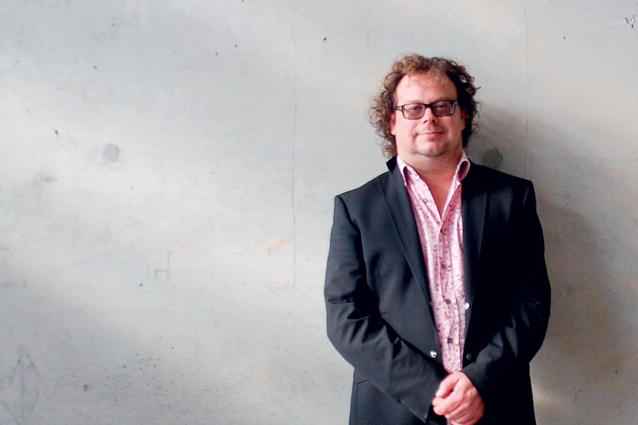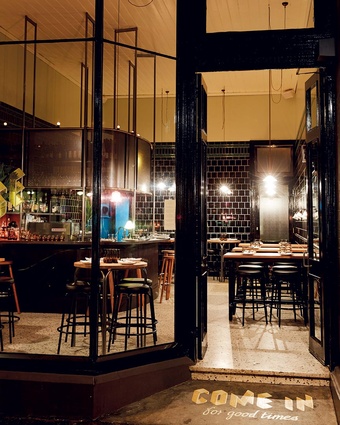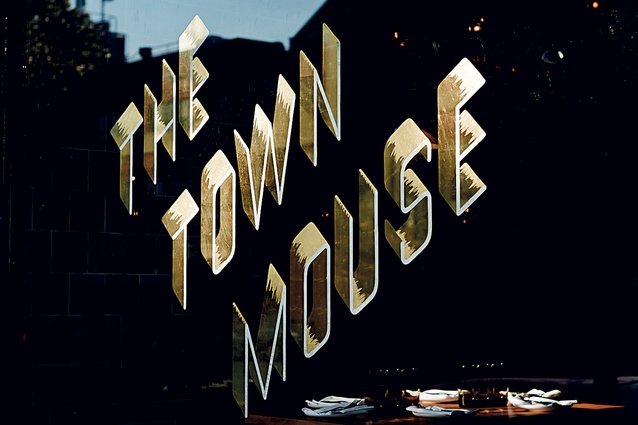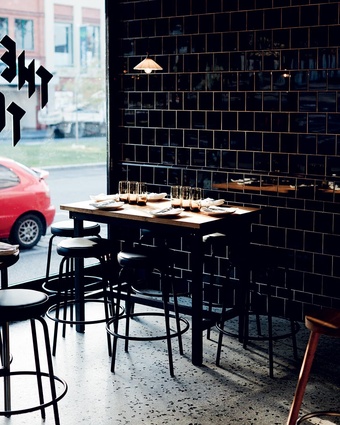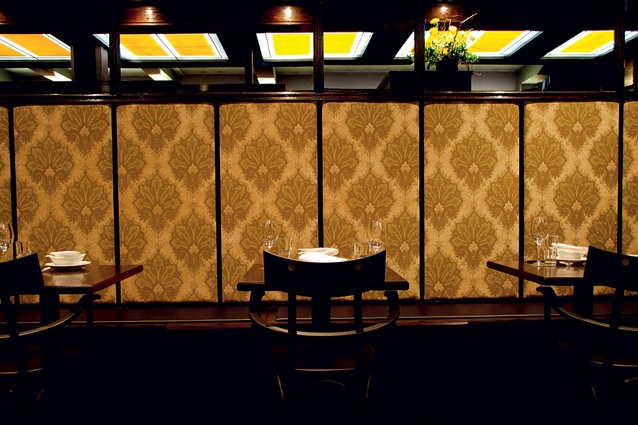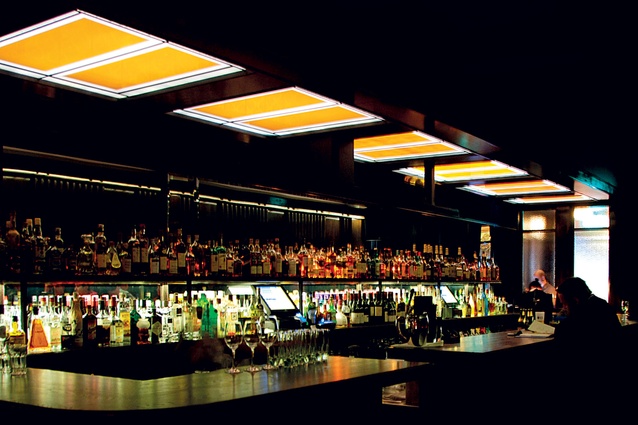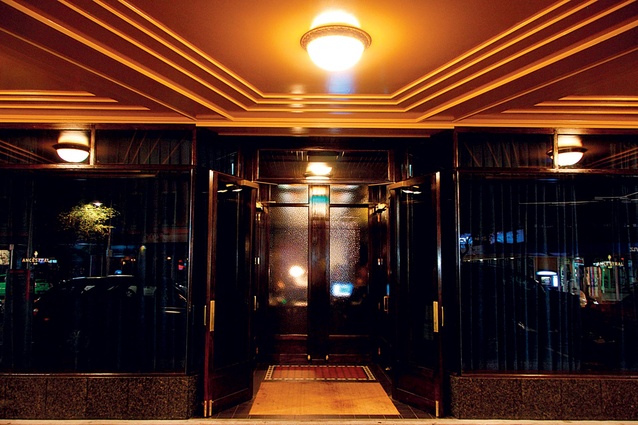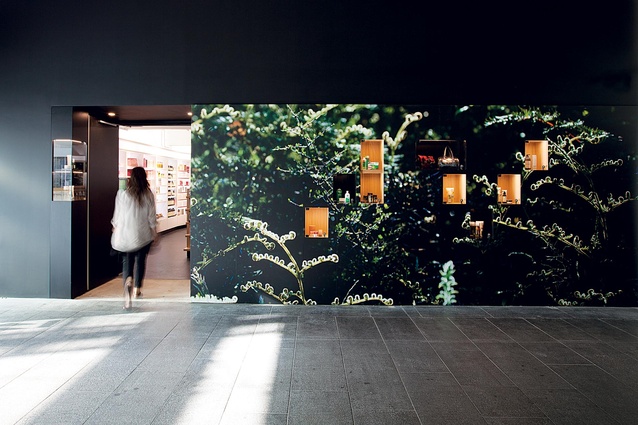Mr Hospitality
You can barely throw a wineglass in Wellington without hitting a café, restaurant or retail space designed by Allistar Cox. Go a bit further afield – Auckland, Melbourne, Tokyo, Dubai – and you’ll find his designs there too. And whether its Courtenay Place’s Ancestral restaurant, Ponsonby’s Golden Dawn or the interiors of coffee giant Mojo’s nationwide cafés, all bear the distinctive sleek and understated Cox style.
Yet the fastest talker in Wellington almost missed his architectural calling. Born in Lower Hutt, Cox twice applied to attend architecture school and twice failed. In the end, he did a four-year design course at Victoria University of Wellington and opened his own eponymous design practice at the height of the 1990s’ recession.
Good food, wine and the enjoyment of both are at the heart of the Cox philosophy. “Eating spaces are all about celebrating food and pleasure,” says the 40-something-year-old Wellingtonian. “We’re selling a culture of enjoyment, giving people a reason to leave their homes and enjoy themselves.”
Urbis: What does your work involve and what do you do all day?
Allistar Cox: I’ve currently got four staff and we typically discuss projects over breakfast and lunch. The kitchen is the most popular spot in the office which is probably not surprising, given the social spaces we design. These days, the staff do most of the documentation as my time is spent engaging with clients, kicking new ideas around and running the business.
U: How did you come to specialise in designing spaces for the hospitality industry?
AC: It’s really only in the last year that I’ve realised we focus on hospitality; it certainly wasn’t by design. But it’s about taking simple pleasures, rituals and enjoyment of food and translating that into architecture. As a designer, I draw satisfaction from seeing the spaces I designed occupied, and from visiting them; you don’t often get that with domestic spaces because you leave when they’re finished and never go back. I’m also really interested in how occupation is staged – one example is the Wellington bar Mighty Mighty, which is pretty much standing room only at the bar. This forces people to stand up and encourages people to chat to those next to them. It’s all about making sure the flow is correct; you can totally ruin a place by putting the bar on the wrong side of the room.
U: Tell us about some of the work you’ve done.
AC: We’ve done an extensive amount of hospitality design work across New Zealand and, increasingly, offshore. We’ve just finished The Town Mouse, a restaurant in Melbourne which belongs to a former owner of Wellington’s Matterhorn restaurant, and a café in Dubai with another former Matterhorn owner. Currently, 50 per cent of our work is done outside Wellington.
U: What are you working on at the moment?
AC: A large, inner-city Wellington restaurant, a significant mixed space in Auckland and an outdoor bar for an independent brewer up north, amongst others. It’s good to have so many exciting projects on the go.
U: What’s the difference between designing hospitality spaces and residential spaces?
AC: Bars and restaurants are the public living rooms of the city. It’s about designing a space that groups of people can feel comfortable interacting in, which is different to designing a more intimate domestic space. With hospitality, there’s also a degree of escapism and you only need to walk into somewhere at 6pm on a Friday to understand that sense of release. In that context, some of my early training in theatre design has been a good complement to working in hospitality design. Both of them attempt to suspend reality and create a bit of magic.
U: What inspires your designs?
AC: I was first inspired by the early designs of the weird and wonderful Ian Athfield, a man who challenged New Zealand’s architectural establishment with the attitude, which I strongly subscribe to, that architecture can be a positive agent for change. My tutor at design school, Dorita Hannah, was also instrumental in shaping how I observe people in everyday situations and in understanding how spatial design can enrich those experiences. In the practice, we’re constantly inspired by food, wine and good coffee. We’re currently having a moment with the vibrancy, rawness and colour of global street markets; that seems to be fuelling plenty of inspiration. Travel is always a big inspiration. It’s good to get out and see what people are doing.
U: What’s the one thing you’d love to work on but haven’t yet had a chance to?
AC: I would love to get my hands on some hotel work! I think there’s a real opportunity to provide great tourism accommodation in this country, at a level that currently isn’t being done. I believe we could bring some fresh ideas to the sector.
U: What do you love about what you do?
AC: Architecture gives me a creative purpose. When you think about it, architecture is inescapable; it reaches into every aspect of our lives. To be a part of that culture is hugely satisfying.
U: What would you have done had you not become a designer?
AC: In a parallel life, I would probably have been some sort of developer, possibly in the hospitality industry. I also would have liked to get involved in urban design. That’s a dream that hasn’t totally gone away

